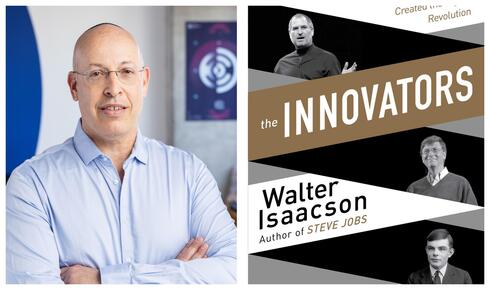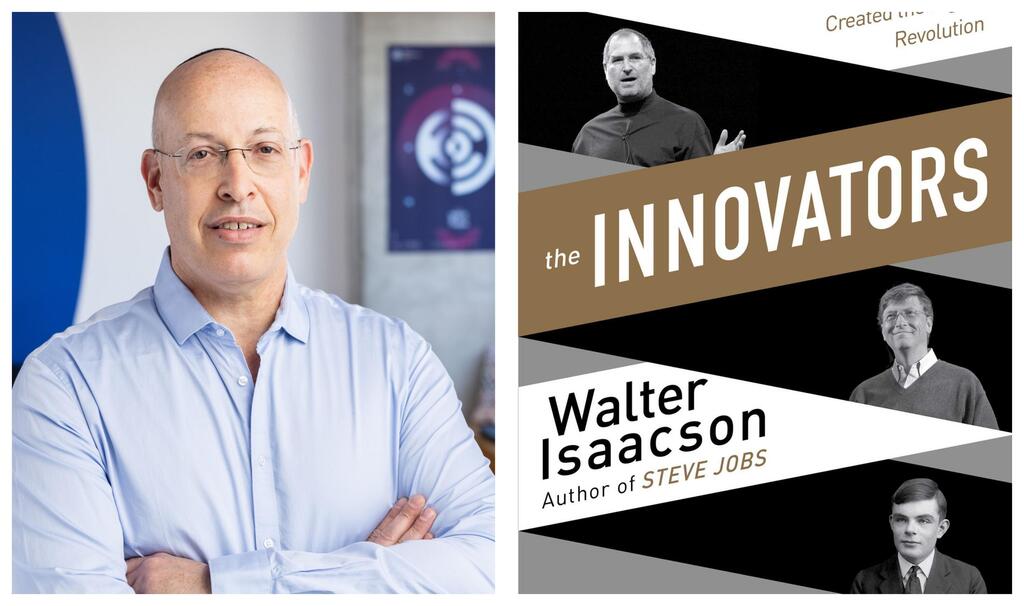
BiblioTech
CTech’s Book Review: A history of the innovators among us
Noam Fraenkel, VP R&D at Carbyne, shares insights after reading “The Innovators” by Walter Isaacson.
Noam Fraenkel is the VP of R&D at Carbyne, a cloud-based emergency communication response platform for public safety. He has joined CTech to share a review of “The Innovators” by Walter Isaacson
Title: “The Innovators”
Author: Walter Isaacson
Format: Book
Where: Home
Summary:
In ‘The Innovators’, Walter Isaacson portrays the history of the Digital Revolution, through the stories of the inventions that were the key milestones of this revolution, the stories of the people who made these inventions happen, and how they did it. Isaacson takes us to the first days of the mechanical computer and the invention of programming. He continued with the transistor, the microprocessor, software and the birth of the Internet, and the Personal Computer who together brought on the proliferation of online services and the Web.
He tells the story of these inventions through the stories of the people who made them happen. The people, some household names, some known to people in the industry, and some more obscure are the heroes of the book and the digital revolution. Isaacson captures the moments and motivations and most importantly the interactions that led them to make these key milestones.
Important Themes:
Isaacson is first and foremost a biographer. In this book, he chose to tell the biography not of a person, but of an era, of how the digital age came to be. As with a biography of a person who is still alive, the story is told only to a certain point (circa 2011). But like a person, their origin story and how they came to be what they are today are both most interesting, as well as defining their character, and in many aspects, their future direction.
Being a biographer, Isaacson tells the story through the stories of the people who made the key innovations that enabled the digital revolution.
In the book, you meet both the famous household names like Steve Jobs and Alan Turing, but also the less famous innovators that made critical contributions along the way.
One of the key themes that Issacson emphasized throughout the book is that no single invention and no single person made the digital age happen. He shows how each innovation is built on the basis of past inventions and the hard work of predecessors. He also shows that each invention is not the mind child of a single individual who invented it in a moment of brilliance. But rather, those inventions were the result of a long process of hard work and collaboration with multiple individuals.
What I’ve Learned:
Personally, there are two main realizations that have stayed with me from reading ‘The Innovators’ that I take with me to my role as an Engineering Manager and to life in general.
- Innovation does not happen overnight and is not dependent on single brilliant individuals. Real valuable and world-changing innovation happens as a result of vision, hard work, and tenacity. It’s a process that must rely on open collaboration and contribution from multiple people in order to achieve truly meaningful results.
- The role of women in the digital revolution. In the early days of the process, women were key contributors to it. Like Ada, Counters of Lovelace, the women programmers of ENIAC, and Grace Hopper. However, as time went by and computers, programming, and the digital age became more mainstream, fewer and fewer women have been involved in it. Regardless of the reasons why, it makes one think what we as an industry, and the world in general, have been missing out on due to this lack of involvement. A key lesson I took away from this is that it is our responsibility as industry professionals and leaders to provide the right environment and incentives for women to choose to be part of the next generations of the Digital Revolution. It will only be much more magnificent if this happens.
Critiques:
Isaacson is a biographer and his true talent is telling the stories of people. In the format he chose for this book, he moves between a lot of people and only touches on glimpses of their stories. This does not give him the opportunity to fully tell a compelling story in the way he has done in his biographies of Steve Jobs or Albert Einstein.
It is still a great read which is very enjoyable and has a lot of value. But if you are expecting to be carried away in the same manner as when reading some of his other biographies, you might feel somewhat disappointed
The book also ends at around 2011 and thus misses the huge impact of cloud computing which now seems almost like a revolution of its own.
Who Should Read This Book:
This book is great for any individual who wishes to know the history of the digital age and how the Internet, the Web, and the online world came to be. I would also recommend it to anyone who leads people in the technology industry, as it gives a great perspective on how innovation and progress are happening.














